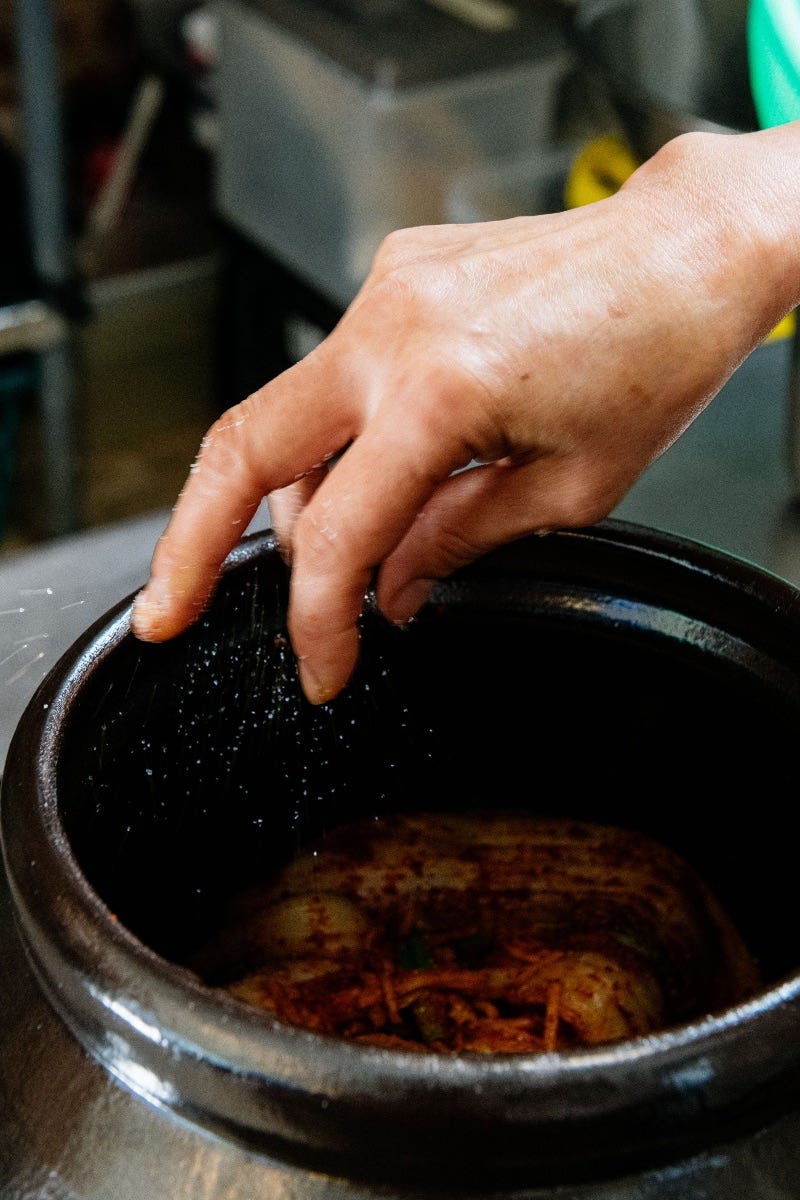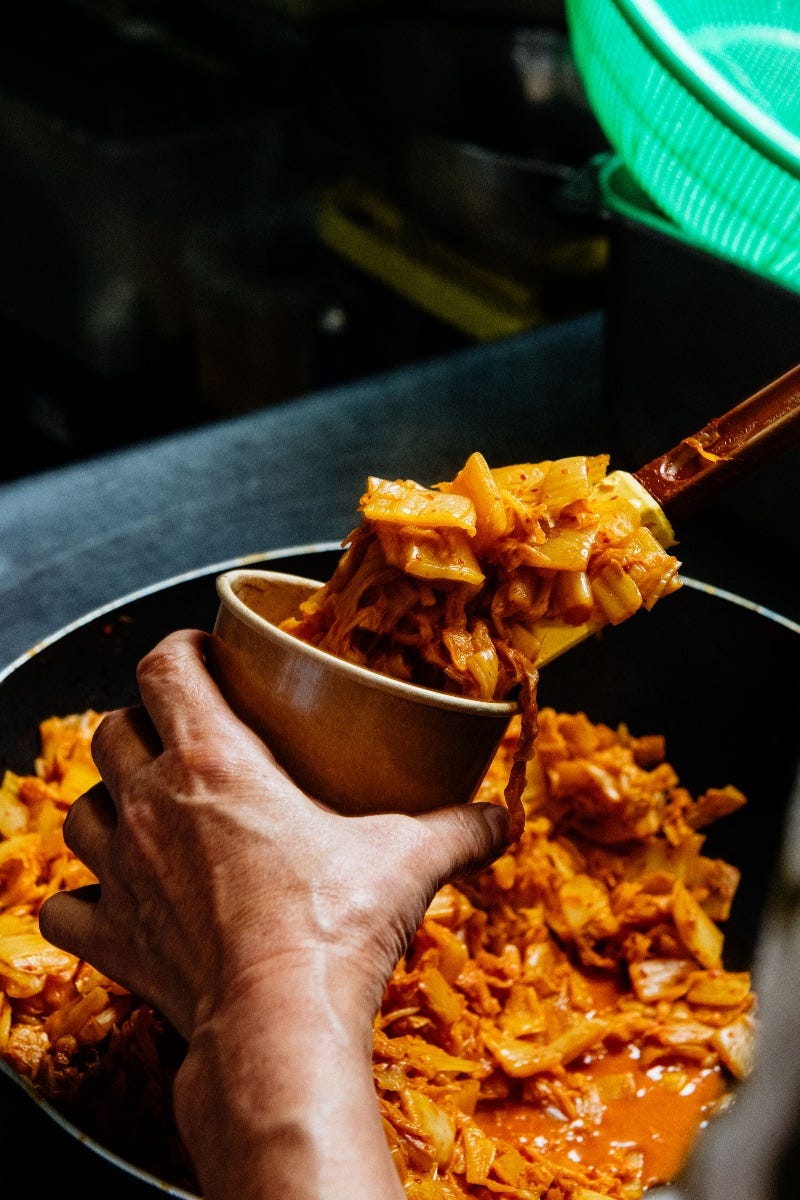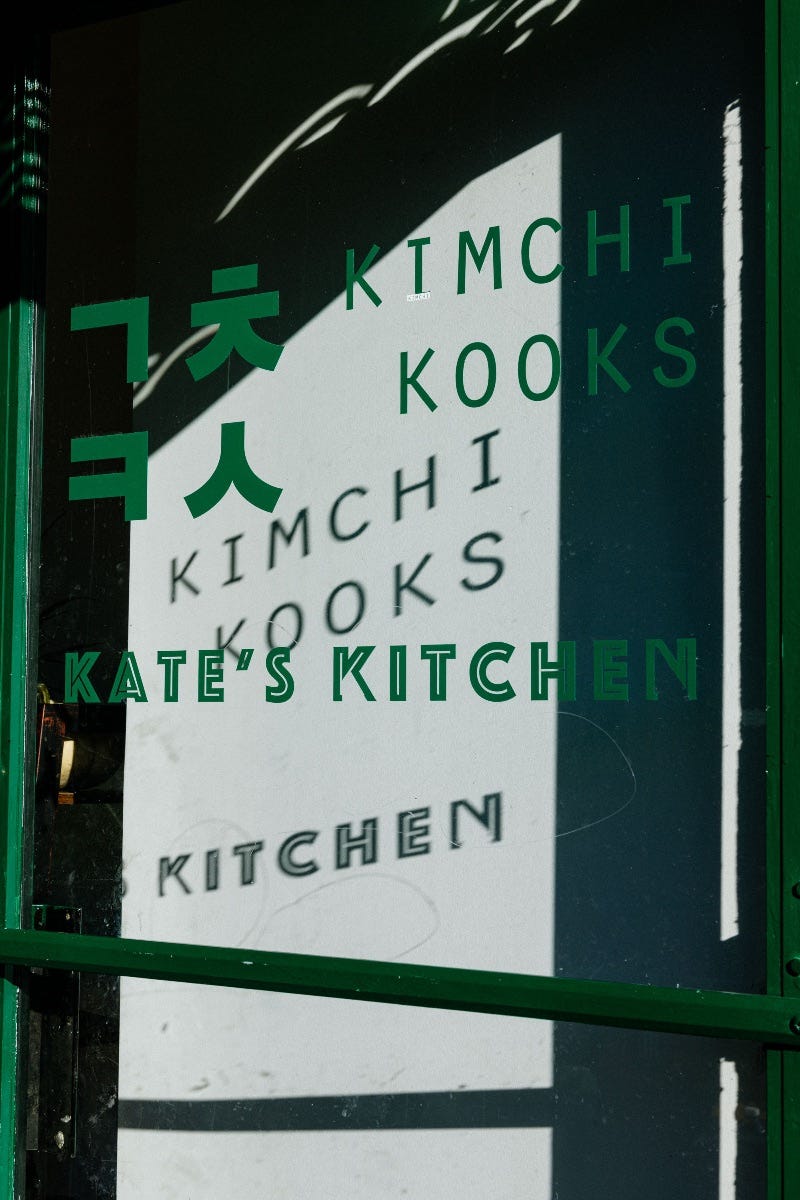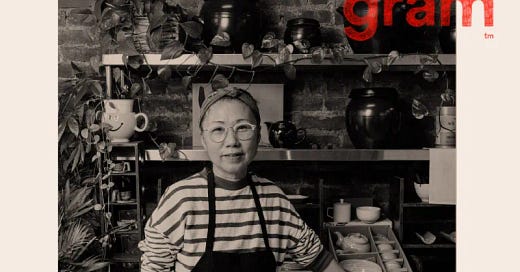Meet the Mother-Son Duo Making Kimchi in Bay Ridge

The Deli is an ode to the artisanal food makers of New York. Two weeks ago, we explored some of the best desserts for your Thanksgiving table; in this issue, we’re chatting with WooJae Chung, one-half of the mother-son pair behind Kimchi Kooks. The company launched in 2015 as a purveyor of kimchi, but these days, they also dish out a variety of banchan, Korean side dishes, and a short menu of takeaway offerings at their new Bay Ridge storefront, Kimchi Kooks Kate’s Kitchen. The brand's origins go back to 1999, when Chung and his mother, Kate Kook, arrived in Bayside, Queens, from Busan, Korea. On arrival, Kook was dissatisfied with the quality of the products she was seeing, and began to dream of starting her own kimchi company. “She worked her way from having nothing to starting her business,” says Chung.

The Product: A range of kimchi and ready-to-eat banchan.
How To Buy: Visit Kimchi Kooks Kate’s Kitchen in Bay Ridge, Brooklyn; go to Down to Earth Farmers Markets in Park Slope and McGolrick Park on Sundays; or visit kimchikooks.com for more retail options.
Price: $8-15.




In early 2015, [my mother Kate] was evicted — she felt desperate and scared. We took a really long walk around Manhattan, and she was like, ‘I always wanted to do this kimchi business.’
Our first production space was a basement restaurant kitchen in Bushwick — the restaurant let us come in at 4 or 5 in the morning till maybe noon. Within three months of our official launch, when we sold our first product to one Korean-owned bodega in midtown Manhattan, Whole Foods wanted to put us on their shelves. We didn’t really know where things were going, but we knew we needed to grow extremely fast to meet the demand. In 2016, we applied to Smorgasburg. But at the end of 2017, we came to a conclusion that we had to drastically downscale. We were only doing one farmer market stand in Park Slope, where we sold our kimchi and made pajeon, Korean scallion pancakes. By doing farmers markets, she had a new relationship with the other vendors and growers and access to local, fresh vegetables and ingredients. That’s when she was able to start making special kimchi, like purple radish, mustard greens or ramps.


Earlier this year, the kitchen we were renting closed. Once Covid began, my mother was getting a lot of racial abuse and harassment from people in her neighborhood in South Brooklyn. It was becoming scary; there were a lot of random people cursing her out, threatening her, so she left and found a new apartment in Bay Ridge. She was walking around her neighborhood and saw this spot that used to be a Chinese takeout place. This whole situation got her thinking, What if I had a little storefront?
I immediately had the name — Kate’s Kitchen. From the get-go, people in the area have shown a lot of love. Another unexpected turn of events, but here we are.


One thing that my mother always says is: “Food is art; food is science.” Kate’s Kitchen is a pretty good extension of her sensibility and her sense of hospitality. She's been importing tea and gochugaru, Korean dried red pepper flakes. And she’s currently working on making her own dubu, or tofu, that she wants to sell at the shop — it’s something she’s very excited about. For us, introducing the Korean identity through food is something that we find rewarding and fulfilling. In the West, Korean people often don’t come across many other businesses or institutions that use Korean names. I am working on getting our labels updated, to better reflect the ingredients that we use that are Korean in their identity. We use Korean cabbage called baechu and Korean radish called mu. Korean dumplings are called mandu, they're not called gyoza.
We do believe good businesses can exist, even in capitalism. When you are providing the right kind of service and product, I think you’re doing good to your community. I think we’re over that phase of these huge illusions about what success means, working with bigger companies. Success can mean something entirely unique to us.


Greatest hit: Classic Kimchi.
Most underrated product: Kimchi’d Kale.
How to best enjoy your kimchi: Kimchi is always best eaten as a banchan, or a side dish to any meal! — Kate Kook
With a steaming hot bowl of rice and a fried egg on top sprinkled with some sea salt and black pepper, drizzled with a little dash of Korean sesame oil and soy sauce, and with some roasted gim (seaweed) on the side. Take a small spoon of rice, add a little piece of yolky egg and kimchi, wrap it in a slice of gim. — WooJae Chung
Favorite places to eat in NY: Stamatis in Astoria; Myung San in Flushing, a low-key Korean spot that we always love to stop by whenever we can; and The Food Sermon in Crown Heights. — WC & KK
Food makers to follow: Metal House Cider and McGrath Cheese Company — KK
Noona's Ice Cream and Duane Park Patisserie — WC





